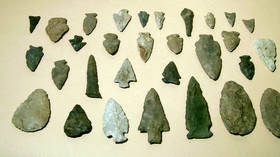Neanderthals found in Russia were family – study

A study of fossilized remains of Neanderthals found in two locations in Russia has confirmed that around 54,000 years ago they lived as large family units. Two individuals were revealed to be a father and his teenage daughter, while two others were second-degree relatives.
The research was detailed in a paper published in the journal Nature on Wednesday by an international group of scientists. They said it was the first time that familial relations between Neanderthals had been documented.
The team sequenced DNA from remains found in two locations in Russia’s Altai region. The fossils were discovered during excavations in the mid-1980s in Okladnikov Cave and after 2007 in Chagyrskaya Cave respectively. The latter site has produced over 80 Neanderthal fossils so far, the largest collection of its kind in the world.
Researchers extracted genetic material from the teeth and bones of what they later discovered to be the remains of 13 individuals: 11 from Chagyrskaya Cave and two from Okladnikov.
The scientist were interested in the makeup of mitochondrial DNA – the type of genes that are found in cellular structures called mitochondria rather than their nuclei and are passed down the maternal line – as well as the Y-chromosomes that sons inherit from their fathers.
Not just the two pairs of close relatives were linked genetically. The remains from Chagyrskaya Cave also shared DNA variants that usually change in just a few generations, confirming that they lived at about the same time.
The evidence indicates that the Neanderthals were living in family groups of up to 20 people, based on the low genetic diversity. It was far lower than in modern humans and more consistent with endangered humanoid species, such as present-day mountain gorillas.
But they were not fully isolated, judging by the relatively high level of mitochondrial genetic diversity. It suggests that female migration was the primary link between separate Neanderthal communities, the paper concluded.













